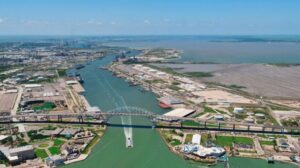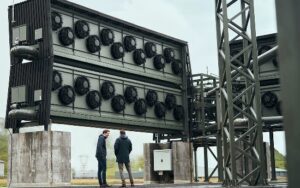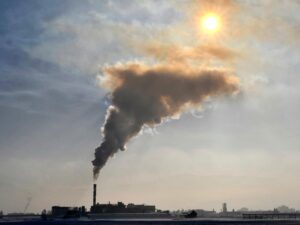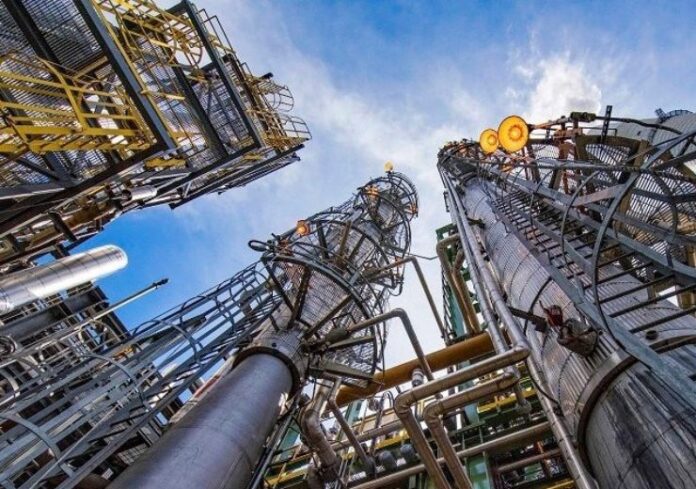In the recent IPCC report on anthropogenic climate change, carbon capture and sequestration (CCS) is seen as a partial technical solution to addressing our continuing contributions of carbon dioxide (CO2) to the atmosphere. CO2 is the long-duration greenhouse gas (GHG) that can linger in the atmosphere in elevated concentrations for centuries if not millennia. The other GHGs like nitrous dioxide and methane contribute to global warming but in shorter spikes although with greater short-term impact. But it is the CO2 that has the attention of those seeking to use technology to reduce the speed of warming and possibly reverse it over time.
The latest headlines about CCS include three stories. The first comes from Corpus Christi, Texas, a place I visited many years ago when I was working on implementing artificial intelligence for remote sensing of offshore oil platforms to track the infrastructure and operational health of oil and gas rigs whether for exploration or producing wells. It was in Corpus Christi where I first tasted fried dill pickles which I must say is an acquired taste. But that’s another story. So here goes.
Corpus Christi Joins Texas Land Office in Proposed CCS Venture

The Corpus Christi Port Authority on September 2nd of this year announced a proposed project to build a CO2 storage solution in partnership with the Texas General Land Office. The choice of location is based on the concentration of CO2 producers in the area and the existence of extensive pipeline infrastructure. The end result will be a CCS hub capable of capturing CO2 from multiple sites and transporting it by pipeline to permanent underground storage. For this purpose, the Land Office and Port have identified a suitable repository where pressurized CO2 can be permanently stored, or directed to industries that can use the CO2 in their production processes. The likely candidates are steel and cement producers. In addition, the Port and Land Office have announced joint plans to convert an existing refinery facility to carbon-neutral hydrogen production for marine use and export.
Iceland Opens First Direct Air Carbon Capture Commercial Facility

Our second story is about Zurich, Switzerland-based Climeworks which has built and opened in the last couple of weeks the first commercial direct air capture project in Iceland. Called Orca, it will capture 4,000 tons of CO2 annually. That’s not a lot when you consider we humans through industrial and energy-producing sources emit 33 billion tons of gas into the atmosphere each year.
The company has plans to build a much larger facility in the future with ten times greater capacity. That’s 40,000 tons of stored CO2 annually and only a drop in the global bucket of GHG emissions.
The technology uses large fans to draw in air that passes through a collector where a chemical substrate attracts the CO2. To release the CO2 the substrate is heated and the gas is then stored in tanks before being injected underground. The subterranean storage area contains basalt and water. The CO2 will bind to the existing rock formation to become permanently sequestered.
Occidental Enters Coventure to Capture A Million Tons of CO2

Our third story is about Canadian company, Carbon Engineering, and Occidental Petroleum, who in a coventure are building a CCS facility to extract 1 million tons of CO2 from the atmosphere annually. But before you conclude that those numbers are going in the right direction, not 4,000, or 40,000, but 1 million tons a year, you should note that Occidental will pump the captured CO2 into its existing mature oil fields in a production process called enhanced oil recovery (EOR).
The use of a direct-air capture facility for CO2 replaces current practices at Occidental which actually mine the gas from subterranean deposits and then compress, store, and pipe it to existing low-yield oil fields. If that doesn’t seem strange to you in a world facing global warming from CO2 in the atmosphere, it sure does to me.
There is little in the way of being a good environmental steward in the deployment of Carbon Engineering’s technology for this coventure. It’s purely a money deal and in my opinion an improper use of the technology. The recovered oil that Occidental will distribute will ultimately be burned as gasoline and diesel in vehicle engines around the world, contributing even more CO2 to a warming atmosphere.
And this CCS direct-air capture plant is only one of a number to be built in the near future under this coventure. It should be open in 2022. All we can hope for in the future is that the vast majority of direct-air capture facilities that follow will truly support negative-emissions targets because that’s not what Occidental is doing. The principle of environmental “do no harm” is forgotten in this coventure, further contributing to the existential threat of a warming planet.
















